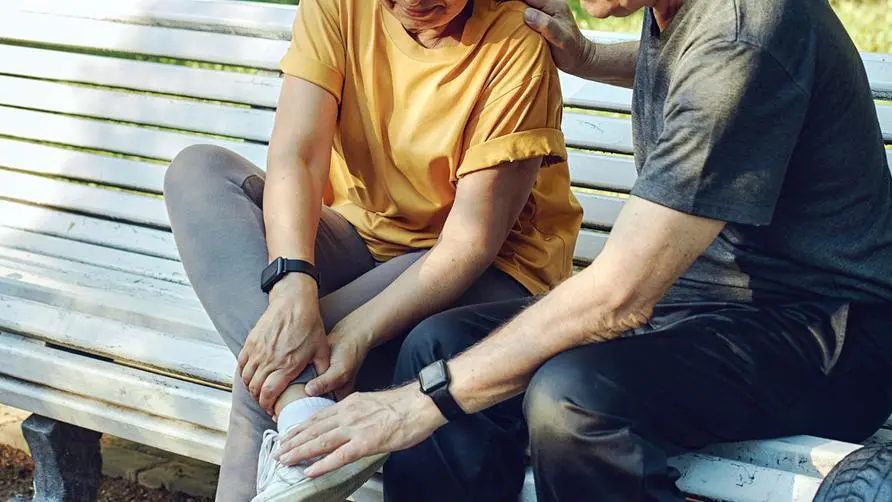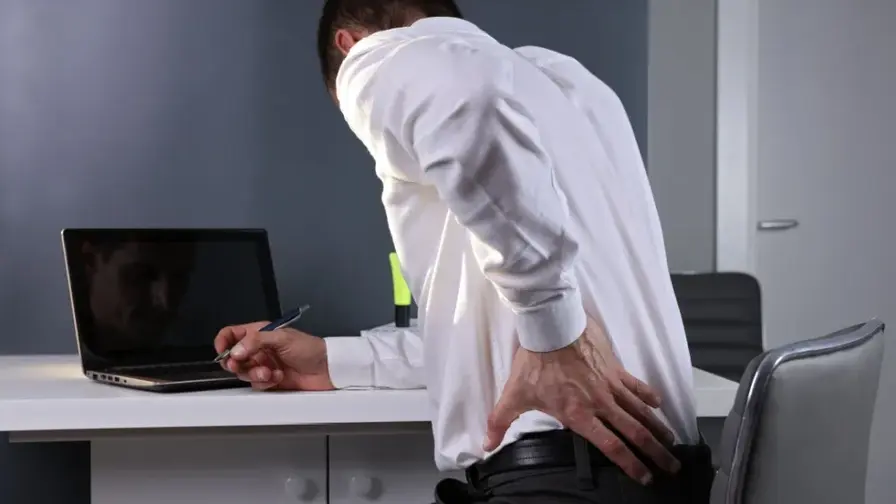Is it okay to have foot pain or numbness? Doctors reveal the truth about "sciatica": 2 lifestyle habits to change

Sciatica is not necessarily related to sitting posture? Numbness and pain in the feet are most common?
Are office workers more likely to suffer from sciatica if they have poor posture and sit for long periods of time without exercising? Pain specialist Dr. Yang Zhuoqi said in an interview that sciatica is not necessarily directly related to sitting posture.
The so-called “sciatic nerve” is the longest nerve in the human body, extending from the lumbar and sacral vertebrae to the soles of the feet. As long as there is a problem in any one of them, symptoms of sciatica may occur.
Dr. Yang Zhuoqi pointed out that the typical symptoms of sciatica are numbness and pain in the feet, extending from the back of the thigh to the calf. Even the soles of the feet may experience pain and numbness. In severe cases, it may even affect the upward or downward pressure of the ankle. muscle power.
Spine compression and fascial inelasticity? Exercise methods that are too single should be avoided
Dr. Yang Zhuoqi said that the most common cause of sciatica is insufficient space around the spine, resulting in nerve compression. This is the main reason why people generally perceive sciatica.
The second most common cause of sciatica is related to pelvic stability. Before the sciatic nerve enters the thigh, it will first pass through a hole in the back of the pelvis. This is where many muscle groups and fascia converge, including the deep gluteal muscle group including the piriformis. If the myofascial tension here is imbalanced and lacks elasticity , may cause sciatic nerve dysfunction, thereby producing symptoms of sciatica.
Dr. Yang Zhuoqi pointed out that whether sciatica is caused by problems with the lumbar spine or deep gluteal muscles, the common cause for most people is related to “too little physical activity” or “too single exercise.” In addition to appropriately increasing the amount of exercise, it is not recommended to engage in only a single type of physical activity (such as walking as the only activity).
The more diversified your physical activities are, the more you can avoid insufficient lumbar and pelvic stability, and maintain your physical fitness to prevent your spine and fascia from becoming increasingly unstable, and even causing pain to plague your body.
Sciatica can also be caused by neuroma? The numbness that gets worse as I walk is actually an arterial problem
Dr. Yang Zhuoqi said that there are many causes to consider for symptoms similar to sciatica. It is difficult to distinguish based on clinical symptoms alone. Sometimes it must be confirmed through ultrasound, MRI and other examinations. One of the possible factors is “neuroma”. In the past, a patient had X-rays and was diagnosed to have lumbar neural foramen stenosis, causing sciatica.
However, during the consultation, it was unexpectedly discovered that as long as the patient tightened his buttock muscles while sitting, the pain would be greatly improved. Based on this clue, further examination revealed that the pain was caused by the compression of the neuroma.
Dr. Yang also shared another clinical experience. A patient who sought treatment for pain in one foot was initially thought to be suffering from sciatica. Normally, just walking around a little would make his foot more and more numb and painful, requiring him to stand still and rest. It will take some time to ease. During palpation, it was found that there was a significant difference in hot and cold temperature between the two feet. The temperature of the foot complaining of pain was relatively cold, and the pulse on the dorsum of the foot was very weak. After further examination, it was discovered that the peripheral arteries were narrowed, resulting in insufficient blood supply to the feet, which in turn caused pain.
Dr. Yang Zhuoqi reminded that the root cause of sciatica must be determined through detailed examination, and it may not manifest as “low back pain” as ordinary people think. “What you think is sciatica is not necessarily sciatica!” When you have symptoms of numbness and pain in your feet and symptoms extending from the back of your thighs to your calves and feet, it is recommended to seek evaluation from a specialist first.
How is sciatica treated? Improving the stability of the spine and pelvis is fundamental
Dr. Yang Zhuoqi explained that sciatica related to the deep gluteal muscle group is relatively easy to treat, including medications, manual physical therapy, instrument rehabilitation, and neurofascial injections, which may all be helpful. If it is sciatica caused by insufficient space in the lumbar spine causing compression, the degree of compression must be determined. When the intervertebral disc problem is mild, drug treatment, instrument rehabilitation such as lumbar pull, and nerve injection can also be helpful. However, if the disc herniation is severe, surgical treatment may need to be considered.
However, Dr. Yang Zhuoqi emphasized that most of the “fundamental treatments” for sciatica still rely on movement education and sports rehabilitation to improve the stability of the lumbar spine and pelvis and enhance the health of myofascia.
From a prevention point of view, people who do not yet have related symptoms can perform aerobic exercise, Pilates, or participate in “Gyrokinesis” (Gyrokinesis) that can be practiced while sitting at home, depending on their own conditions. , increase the diversity of movements and help activate the muscle fascia around the spine.
However, if a person who already has symptoms of sciatica is recommended by a doctor to undergo sports rehabilitation, he or she can ask a professional sports physiotherapist to lead a one-on-one exercise course to fundamentally reverse the degenerative trend.
Sciatica symptoms may affect normal life. Dr. Yang Zhuoqi recommends consulting a specialist who can conduct a detailed face-to-face physical examination, including palpation, body movement testing, and angle testing. For judgment of nerves, muscles, bones, joints, and fascia This type of issue is very important. A complete physical assessment may not only discover the underlying cause of the disease, but also avoid unnecessary surgery!
Further reading:





